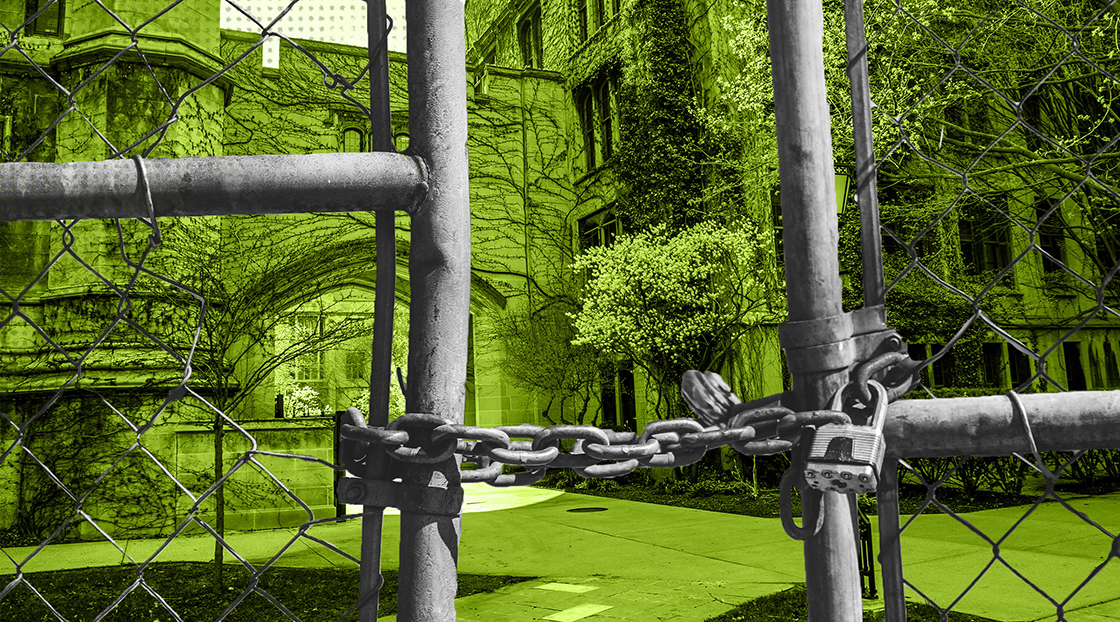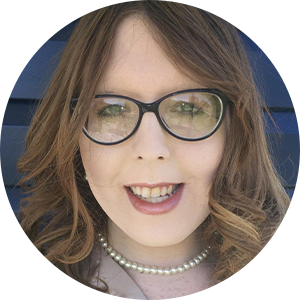Faced with strong headwinds, some higher education institutions are struggling to keep their doors open. In recent years, more and more of them concluded that closure is the only option possible. This trend, punctuated by recent announcements from schools like Missouri’s Fontbonne University, which announced in March it will not admit a 2024 freshman class and will cease operations in the summer of 2025, raises questions about the future stability of many colleges across the nation.
Contributing Factors
Declining enrollments and financial strains are the primary culprits driving these closures.
Both public and private institutions rely heavily on tuition for revenue, explained David Attis, managing director of research at educational consultant EAB. For that reason, when the number of students declines, so do revenues.
“There was a steeper decline during COVID, and most people think we aren’t going back to those levels for a range of reasons,” he said. “We’ve got a demographic decline in most parts of the country and the so-called ‘demographic cliff’ coming up in the next couple of years where we’re going to see an even steeper drop in the number of 18- to 22-year-olds. The percentage of recent high school graduates who decide to go to any college has also been declining.”
Scrutiny over the value of higher education has also fueled this decline, according to Dr. Thomas Harnisch, vice president for government relations at the State Higher Education Executive Officers Association.
The drying up of COVID-19 funds has exacerbated these challenges. “We had aid during the stimulus packages that went to public and private institutions of higher education. That aid is drying up and institutions can no longer rely on pandemic-era relief,” Harnisch added.
While some large, primarily online institutions, such as Argosy University in 2019, have closed in recent years, small private liberal arts schools are especially feeling the crunch. Flagship public institutions have grown, resulting in smaller institutions facing greater enrollment volatility.
“If you lose 50 or 100 or 200 students, that makes a big impact if you’ve only got 1,000 students,” he explained. “Being smaller makes it harder to deal with volatility in enrollment shifts because one student represents a much bigger share of your revenue than if you’re very large.”
Never an Easy Choice
Deciding to close comes down to a mathematical equation for many institutions, according to Scott Willyerd, managing partner at the consulting firm RW Jones. He has helped dozens of institutions navigate closures or program reductions in recent years.
“You’re looking at revenues, expenditures and monies that they have available to use through unrestricted endowment funds,” he said.
When the Vermont-based private Goddard College, which distinguished itself on offering “an alternative, progressive higher education,” announced in April that it would be closing its doors after 80 years at the end of the spring term, it said it was doing so because it was “facing financial insolvency” and has been facing “a significant and persistent decline in enrollment since the 1970s.”
In announcing the move, Mark Jones, chair of the Board of Trustees, said, “The decision to close Goddard College was not made easily or quickly. With declining enrollment and financial insolvency looming, the Board was left with no other option. Our hearts are broken.”
Although the closure announcements seem to be accumulating in recent years, Harnisch noted there have been other periods of disruption in higher education, including the closing of high-profile for-profit colleges following the Great Recession, as well as concerns about closures at the tail-end of the baby boom generation.
When advising presidents and boards on how to navigate closures, Willyerd offers four pieces of advice: acknowledge that it’s going to be hard, understand that there are no magic words that are going to mitigate the sadness and anger, recognize that people who are upset by the outcome are going to pick at the process and prepare by hiring law firms with expertise in closures.
“Experience is a must. Finding counsel that has done this and has a track record of working with institutions is a must. It’s incredibly helpful when you’re dealing with your accreditors and the department of education within the state that you’re in,” he said.
Announcing Closures
Even if the closure was inevitable, the reaction the announcements elicit from institutional stakeholders is often quite emotional.
Willyerd stressed, “There are no magical words that are going to be used to mitigate the sadness, the anger, the other stages of grief that are going to occur in an institutional closure announcement. Good communicators really deliver messages in a humane and straightforward manner.”
After the dust has settled, Willyerd said it’s helpful to move the conversation to the institution’s legacy.
“After a closure announcement is made, institutions have to turn their attention to the legacy part of the institution,” he said.
Institutions occasionally get a last-minute boost from alumni and other large donors after announcing they’re headed for closure, Attis explained.
“But that’s not enough. That can buy you one to three years, but if you don’t fix the enrollment, there’s no hope,” he said. “You have to bring students back and show them that you will provide great outcomes.”
Teach-Out Plans
Most institutions manage their closures through teach-out plans, which the Office of Federal Student Aid describes as “a written course of action a school will take to ensure its students are treated fairly with regard to finishing their programs of study.”
“It’s important that we have an orderly process that protects students and makes sure that they’re affected to the least extent possible,” Harnisch said.
Being a teach-out partner to help continue and complete the educational programs for students from a closing institution can be lucrative for other schools.
“They’re struggling too, they want students and they can often make a pretty good financial deal for those students to complete their degrees,” Attis said.
Goddard, for example, made arrangements with Prescott College, a like-minded private school in Arizona, to allow students to complete their degrees at the same tuition rate. After being named Goddard’s preferred teach-out partner, Prescott’s president, Dr. Barbara Morris said, “We are committed to ensuring that Goddard students continue to have access to a high-quality education and thrive academically, and our community is here to support Goddard students through this transition.”
Structured Closures Ease Transition
In its report on the impact of closures on student outcomes, the State Higher Education Executive Officers Association looked at students who experienced closure across 467 campuses between 2004 and 2020. It found that less than half of the students it looked at continued their enrollment at another institution post-closure. Students who experienced an orderly closure were more likely to reenroll elsewhere than those who experienced abrupt closures, especially at private for-profit institutions.
The time between when an announcement is made and the actual ceasing of operations can be quite stressful for institutional leaders, who often must contend with the idea of maintaining institutional credibility. This, Willyerd explained, comes down to using the strategies that were developed before the announcement.
Leaders also must consider the impact the closure will have on their future career aspirations. If they navigate the closure with grace, Willyerd said, being president of an institution at the time of its closure isn’t necessarily a scarlet letter. “Presidents can go on to lead other institutions. In many cases, dealing with something like this, a real institutional challenge, is something that presidents can take lessons learned with them,” he said. “If you don’t have presidents who are leaving a presidency to go into another presidency, there may be opportunities for consulting around this for institutions.”
Program Mergers
While some institutions have no choice but to close, others are finding ways to survive through program cuts and mergers.
“These are most always economic decisions and colleges and universities need to be good stewards of their resources. It’s often a major that has fallen out of favor. They’re looking at the resources that they’re spending to keep the programs open, and sometimes the juice isn’t worth the squeeze,” Willyerd said of program cuts.
Attis explained that humanities programs often find themselves on the chopping block because students now are career-focused and don’t always see the link between the humanities and career outcomes.
Citing fewer college-age students, the lingering effects of the COVID-19 pandemic and issues related to the Federal Application for Student Aid, the University of Lynchburg, a Virginia-based private nonprofit, announced in late May that it would be closing 12 undergraduate and five graduate programs. Dr. Alison Morrison-Shetlar, president of the university, explained in the announcement, “Other schools are cutting programs, and, for the sake of our future, we must too.”
Willyerd advises a similar cautious approach to announcing program cuts.
“Develop a communications plan and own it before it appears externally is incredibly important,” he stressed.
Before a public hearing about the cuts, he encourages institutions to be clear about what will happen to faculty and students, including whether faculty will be let go or reassigned and whether students can finish their programs.
If institutions cut programs, they should also consider what programs they should add, Harnisch stressed.
“But one challenge with adding new programs to attract students is that there are additional costs. If the programs are in STEM fields, there may be a lot of interest from students, but they also cost more,” he said.
Recent Acquisitions, Mergers
Cabrini University, a Pennsylvania-based Catholic institution, reached an agreement with fellow Pennsylvania-based Catholic institution Villanova University in November 2023 to be acquired after the conclusion of the 2023-24 academic year. The agreement stipulates that the Cabrini name will be maintained on the campus and that Villanova will preserve the overarching Cabrini legacy and mission.
Some institutions are making acquisitions a core component of their operating model, like the private nonprofit University of Redlands in California. In early June, it announced its third acquisition, the private nonprofit California-based Woodbury University, in four years. Other acquisitions by Redlands include the San Francisco Theological Seminary in 2020 and the Presidio Graduate School in 2023.
“In today’s competitive higher education landscape, we must explore innovative ways to grow by offering new programs that are in high demand by students and employers,” University of Redlands President Krista L. Newkirk said in the announcement. “By joining together, our shared academic portfolio will enable us to create a progressive and compelling environment where our combined impact is greater than what either institution can do alone.”
Community Impact
Employees are often impacted the most by mergers, Attis explained.
“The reason people often go into a merger is that they are overstaffed. If you’re going to merge with someone else, they don’t need all those faculty and staff,” he said.
Students on the other hand, he added, are often insulated because they’re highly sought after by other institutions.
The impact of closures and mergers also extends to the surrounding communities, Harnisch added.
“Colleges and universities provide a lot of jobs, and in some communities, they’re the top employer,” he said. “It can have real effects on communities when institutions close.”
Despite some successful mergers, Attis cautioned, institutions often wait too long to consider that path out of fear that doing so might reflect poorly on the institution or optimism that things might get better the following year.
“We often hear that colleges wait too long to consider a merger and by the time they consider it, they’re no longer an attractive partner because they are so deep in debt,” Attis said. “The earlier you start to acknowledge and address the challenges, the more likely you are to be able to turn it around.”







